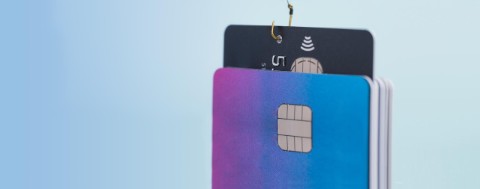
What is phishing?
Scammers are increasingly trying to trick consumers and steal their confidential information and money. This type of crime is known as ‘phishing’.
How do scammers go about phishing?
Scammers call the victim or they may send an online message such as an e-mail, text or WhatsApp message that contains a link to a fake website.
On this website, victims are asked to not only enter their personal data and bank details, but also their response codes or PIN.
Current types of phishing
How can you protect yourself against phishing?
- Question every message that you receive. Fraudsters can easily add a KBC logo or fake the sender’s name. If you’re in any doubt, forward suspicious messages to secure4u@kbc.be.
Don't blindly believe every message. We’ll never ask you by e-mail, text message or phone to solve a problem with your account or the online banking service you use with us. - Never give your debit card to anyone else and never send it off in the post.
- Save the real KBC website (https://www.kbc.be) as a favourite or enter the address manually in your browser.
- Keep the codes you generate with your card reader secret, just like your debit card PIN. They are the key that unlocks your money and they are strictly personal to you. We’ll never ask you for them by e-mail, text message or phone.
- Watch out! Scammers are increasingly using bogus websites with URLs starting with https://. The ‘s’ in https stands for ‘secure’ and tells you you’re using a secure connection. However, that’s no guarantee that the party you’re dealing with is trustworthy.
- Verify that the KBC website you’re using is legitimate.
Check the URL in your browser address bar and make sure that the: - KBC website address starts with ‘https://www.kbc.be’
- KBC Touch address starts with https://kbctouch.kbc.be/.
How do I recognize authentic emails from KBC?
Click here for more info.



